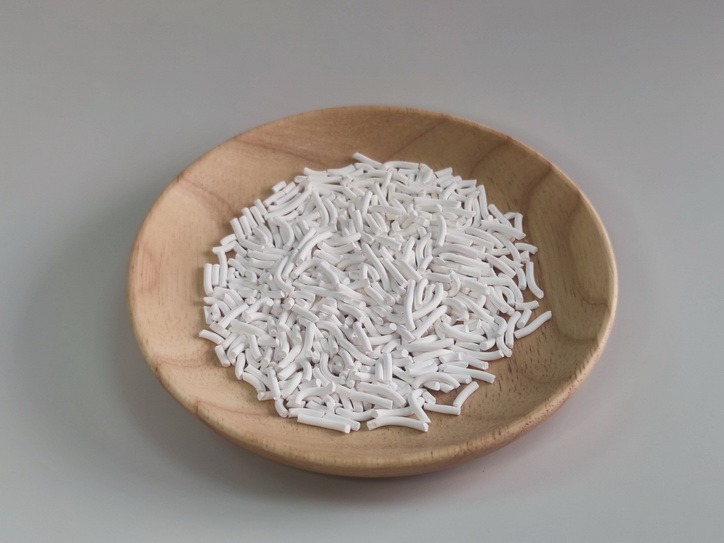
Experts have proved the importance of zeolite catalysts in the chemistry field through many experiments.
Methanol-to-olefins (MTO) conversion is one of the most important reactions in C1 chemistry and has proven to be the most successful non-petrochemical industrial route to produce light olefins.
The Dalian Institute of Chemical Physics (DICP) of the Chinese Academy of Sciences has been working on the research and development of the MTO reaction for forty years. In 2009, the MTO technology of Dalian(DMTO), the world’s first MTO device was completed and put into operation in China. Since 2010, Dalian Chemical continue to develop third-generation DMTO processes (DMTO-II and DMTO-III) through more effective technological innovation. Therefore, MTO has become one of the important routes for the production of ethylene and propylene in china.
Establishing a full knowledge of dynamic multiscale diffusion and reaction processes is crucial for zeolite shape-selective catalysis and is urgently needed in academia and industry, especially for zeolite-catalysis MTO conversion. So far, the diffusion and reaction of MTO and DTO (dimethyl ether to olefins) have usually been worked separately and they did focus on a single scale. The dynamic autocatalysis of MTO further complicates the reaction and diffusion in the MTO reaction. Uncovering the dynamic interaction effects of diffusion and reaction in time-dependent MTO zeolite catalysts materials at multiple scales is challenging but imperative.
Multiscale Dynamic Crosstalk Technology of Zeolite Catalysts in Methanol to Olefins Reaction
In the study recently published in the National Science Review, the research team led by Prof. LIU Zhongmin and WEI Yingxu (from National Engineering Laboratory for Methanol to Olefins, DICP, CAS) revealed the dynamic multiscale crosstalk behavior and mechanism among time-dependent materials, effect on diffusion and reaction for methanol and dimethyl ether conversion catalyzed by SAPO-34.
They reported that the dynamics of DTO reactions (relative to MTO) are clearly regulated by diffusion-reaction-material crosstalk, even when carried out in the same synthetic zeolite material and it is very close to hydrocarbon pool mechanisms. On the one hand, the cavity-type SAPO-34 material evolves dynamically with time from initiation to decay of the autocatalytic MTO reaction due to the modification of confined organics. On the other hand, time-dependent materials in turn generate catalysis through the dynamic evolution of diffusion and reactions. This time-dependent dynamical crosstalk between materials and reactions occurs from the catalyst bed scale to the catalyst crystal and CHA cavity scales,
The multiscale crosstalk behavior and mechanism originate from the reactant shape selectivity of zeolite catalysts materials when the dynamic continues reaction of MTO and DTO. Compared with methanol, the mass transfer of DME is limited on SAPO-34 zeolite additive because it’s high energy barrier of surface permeability and intragranular diffusivity hinders the outer surface penetration and intercavity hopping of DME. The restricted mass transfer of DME elongates the action zone of DTO on the catalyst bed, but also leads to a lower local chemical potential of the reactants, resulting in moderate reaction kinetics and heavier coke in the local catalyst microenvironment.
This diffusion-reaction-material crosstalk that occurs at the microscopic scale in the CHA cavity triggers crosstalk behaviors at multiple scales: (i) the interior of the catalyst crystal is still accessible by a considerable portion of DME at the later stage of the reaction, maintaining the DME high capacity turnover, and (ii) ultimately lead to a relatively mild and homogeneous reaction and deactivation pattern, as well as a higher catalyst utilization efficiency.
In contrast, methanol conversion presents a layer-by-layer heterogeneous reaction and deactivation mode, while the high local chemical potential of methanol makes the enhanced reaction and deactivation concentrated on the outside of the catalyst crystal, becoming the main effective region. The feature of the DTO reaction presented in this case moderately developed reaction kinetics and suppressed coke deposition imply the possibility of realizing the long-term operation of the fixed-bed DTO process.
Zeolite catalysts not only embody the reaction feature of heterogeneous catalysis but also provide enhanced, moderated, or suppressed local reaction kinetics through a special catalytic microenvironment, resulting in multiscale diffusion and heterogeneous reactions, thereby achieving efficient and shape-selective catalysis. For specific dynamic reactions catalyzed – by zeolite materials, achieving the optimal spatiotemporal synergy of materials, diffusion, and reactions is the most important key for optimizing catalyst processing and continues development.
